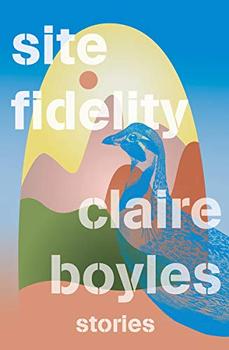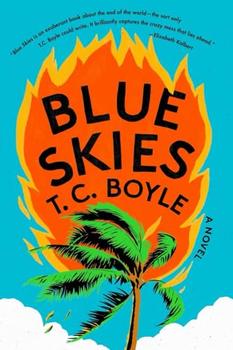Summary | Excerpt | Reviews | Beyond the book | Read-Alikes | Genres & Themes | Author Bio

Site fidelity is the tendency of a species to return to the same place every year. In the opening story of Claire Boyles' debut, "Ledgers," the term refers not just to the Gunnison sage-grouse that live on Norah's father's ranch, but also to the people who remain devoted to this Colorado territory despite its challenges. Norah, an ornithologist, moved back to the family home when her father had a stroke and had to sell their land to Henson, a local rancher. She has always monitored the number of grouse on the land — down to a dangerously low 15 at last count — each year and plans to continue doing so whether Henson grants permission or not. The building of a dam decades ago harmed the grouse population, and now she finds evidence that Henson plans to burn the birds' sagebrush habitat (see Beyond the Book) to create additional grazing for his cattle.
Whether by fate or by choice, these stories' human characters are just as tied to where they live as the sage-grouse, and there is a strong environmentalist thread to the book as people fight to protect the land. In "Early Warning Systems," Mano, who makes paintings of trout in her spare time, discovers a conspiracy at the water treatment facility where she works. She has to go over her bosses' heads to plead for the river's health. "Most of the officials declined to reply, but Mano kept writing, kept painting, kept offering chances."
Hope and perseverance are watchwords for Boyles' characters, many of whom are single mothers or unmarried women. Nearly half of the stories center on a trio of feisty sisters: Ruth, Agnes Mary and Mano. In "Alto Cumulus Standing Lenticulars," it's the 1970s and Ruth, pregnant with her fourth child, gets a job at a state park so she can earn enough to leave her alcoholic husband and start nursing school. In "Sister Agnes Mary in the Spring of 2012," the middle sister, a nun, commits to the anti-fracking cause at age 74, locking herself to the machinery to protest a plan that could threaten the health of nearby schoolchildren.
There are few functional families or model citizens here; Boyles concentrates on those on the fringes of society who break the rules to get by or to object to injustice. In "The Best Response to Fear," set during a recession, thirtysomethings Amy and Bobby live in a derelict sugar mill and kill rabbits for food. Their lack of direction reflects a widespread collective anxiety about economic and environmental collapse. In "Chickens," there are unexpected consequences when Gracie hides her flock from officials during a bird flu outbreak. Her act of civil disobedience, minor as it seems, arises from disillusionment with government policy.
Boyles' characters are beset by rumors and feuds, but do their best to heal estrangements and rise above society's expectations to keep their families together. I appreciated the focus on blue-collar people like miners and oil field workers, as well as state or national park staff: those who work directly on the land rather than dictating about it from afar. "Man Camp," set among oil rig workers in North Dakota, is reminiscent of Nickolas Butler's work with its frequent topic of friendship between men, and nicely counterbalances the matriarchal stories in the collection.
The book spans more than four decades and travels to Nevada and the Dakotas, but keeps southwestern Colorado's sagebrush steppe at its heart. Aside from the central trio of female characters — who, intriguingly, seem to have an autobiographical origin for Boyles: in the Acknowledgments she thanks "my Granny Ruth, my Grandma Aunt Mano … and my aunts Marcia, Sue, and Cathy (the original three sisters)" — additional characters from certain stories pop up again in others. Underlying all the tales is the question of responsibility: what we owe to our families and to the land we steward. Heritage is portrayed as important, but the future as uncertain when business as usual threatens the continued existence of habitats and creatures.
Full of strong-willed characters, especially independent women, and a sense of duty to beautiful but endangered places, Site Fidelity is one of the best books I've read this year and has me eagerly awaiting whatever Boyles writes next. It reminded me most of Love Medicine by Louise Erdrich, as well as Barbara Kingsolver's early fiction set in the Southwest, but I can also imagine Boyles developing the dual theme of family bonds and the environment in a similar way to T.C. Boyle, Jonathan Franzen and Richard Powers. In other words, look out for Great American Novel-caliber material from her in the future.
![]() This review
first ran in the August 4, 2021
issue of BookBrowse Recommends.
This review
first ran in the August 4, 2021
issue of BookBrowse Recommends.

If you liked Site Fidelity, try these:

by T.C. Boyle
Published 2024
From best-selling novelist T. C. Boyle, a satirical yet ultimately moving send-up of contemporary American life in the glare of climate change.

by Maggie Shipstead
Published 2023
From the Booker Prize nominee and New York Times bestselling author of Great Circle, a piercing, irresistible first collection of short stories exquisite in their craft and audacious in their range.
To limit the press is to insult a nation; to prohibit reading of certain books is to declare the inhabitants to be ...
Click Here to find out who said this, as well as discovering other famous literary quotes!
Your guide toexceptional books
BookBrowse seeks out and recommends the best in contemporary fiction and nonfiction—books that not only engage and entertain but also deepen our understanding of ourselves and the world around us.